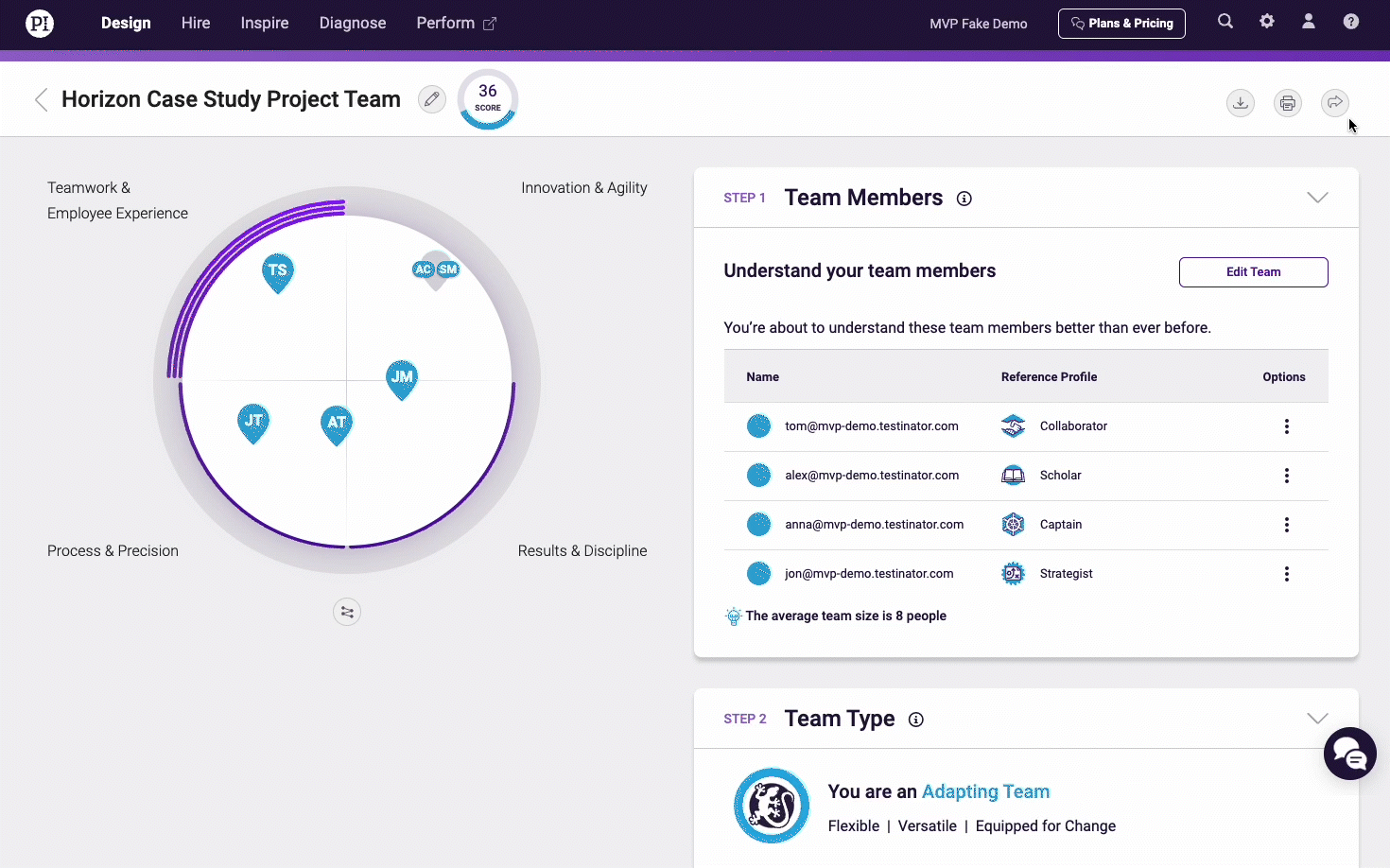Every day in offices across the globe, bright-eyed sales reps begin a new journey with a company in hopes of blowing the lid off their quota and advancing their careers.
But that initial feeling can wear off quickly if they’re not set up for success. Poor onboarding—or a lack of onboarding altogether—contributes to a whopping 16% turnover rate in sales roles.
Onboarding new employees is critical—especially in sales, where employees need to know the ins and outs of what they’re selling, how they’re expected to sell it, and the technology associated with the sales process.
Kristen Robertson, People Operations Manager at The Predictive Index®, defined onboarding as “integrating an employee into your organization—which means getting them immersed in your company culture, your core organizational values, your beliefs, performance expectations, technology, everything.”
In this blog, you’ll learn everything you need to know about how to onboard new sales hires.

Good onboarding starts with good hiring.
You could have the best onboarding in the world—but if you made a bad hire, it won’t lead to the results you’re looking for.
When hiring salespeople, it’s important to look for behavioral and cultural fit. Does this candidate have the right comportment for the role? That’s behavioral fit. Does this person embody our organization’s core values? That’s cultural fit.
If a candidate isn’t a behavioral or cultural fit, they’ll struggle to be successful in the role.
Make better sales hires by following these three steps:
1. Craft a good job description.
The best job descriptions don’t just outline the tasks associated with the role, but also the behavioral traits necessary to be successful.
For example, your sales team may spend a good amount of time on the phones and entering prospect data into a CRM. Those are the tasks associated with the role. What characteristics would make a candidate good at those tasks? Probably extraversion, persuasion, and some degree of detail-orientation.
2. Incorporate people data into your hiring process.
Hire the right people by leveraging data. Resumes, education, and interviews are all forms of data—but they’re not very good at predicting job success. Include behavioral and cognitive assessments to gain additional data points that will help you find the right fit for the job.
3. Uplevel your interviewing process.
While most interviews focus on the role itself, consider interviewing for cultural and behavioral fit.
For example, if the role requires following a certain procedure as part of the sales cycle, and your candidate isn’t very process-driven, you might ask them to tell you about a time they had to follow a strictly-defined process. What was the procedure? How did they stretch themselves to follow it? What was the result?

The key to effective onboarding is understanding your new hire.
The first step in building an efficient onboarding process is to understand who exactly will be going through the onboarding. Do your candidates prefer to see the process mapped out? Do they want to dive right in and figure things out as they go?
The PI Behavioral Assessment™ can help with this. It measures four primary workplace behavioral drives:
Dominance: Dominance is the drive to exert influence on people and events. More dominant individuals want to put their fingerprint on things, while less dominant people aim for harmony and collaboration.
Extraversion: Extraversion is the drive for social interaction with other people. People with higher extraversion prefer to work with and through others, while those with lower extraversion may be more reflective and heads-down.
Patience: Patience is the drive to have consistency and stability. Those with high patience are more steady and even-keeled, while those with low patience tend to like variety and moving at a fast pace.
Formality: Formality is the drive to conform to rules and structure. Those with high formality are thorough and disciplined, while those with low formality need freedom from rigid structure.
Based on how high or how low these factors are, the individual is assigned a Reference Profile—which tells you, at a high level, what motivates and drives that person.
Join 10,000 companies solving the most complex people problems with PI.
Hire the right people, inspire their best work, design dream teams, and sustain engagement for the long haul.
Typically, sales roles require a higher degree of extraversion. Reference Profiles with higher extraversion tend to call in a category called “Social Profiles.”
The best onboarding strategies for the six Social Profiles
In the workplace, Social Profiles tend to focus on relationships—perfect for a sales position.
Here are suggestions for tailoring your onboarding based on the six Social Profiles:
1. Altruist
Altruists get their fulfillment from supporting their peers and finding harmonious solutions. They’re also detail-oriented, precise, and invest a lot of effort into follow-ups.
If your new sales hire is an Altruist, help them ease into the group. Don’t make them get up in front of the team to introduce themselves. Instead, try pairing them with an experienced sales leader who can guide them through the ropes.
Altruists also like to know what to expect and what success will look like in the role. Be sure to outline clear expectations and guidelines for them.
2. Captain
Captains love the opportunity to rise to a challenge. They’re very independent and easily build relationships. Captains are natural leaders who motivate their teams to work hard while consistently raising the bar.
When onboarding a Captain, make sure to introduce them to the team—then let them hit the ground running.
3. Collaborator
Collaborators are very outgoing and love helping out their co-workers.
When onboarding Collaborators, give them opportunities to connect with other new hires and the team they’ll be working with. This will help them build the relationships that drive their success.

4. Maverick
Mavericks are outside-the-box thinkers. They love to do what’s never been done before. Their fearlessness when confronted with challenges and willingness to take the risks necessary to move a deal forward make them great salespeople.
When onboarding a Maverick, let them dive into work and figure it out for themselves. If possible, give them the freedom to do things their way—they don’t enjoy being bound by someone else’s process.
5. Promoter
Promoters are supportive team players who are well-liked among their teams. People who work with Promoters often describe them as charismatic, flexible, persuasive, and very diplomatic.
When putting together a personalized onboarding experience for Promoters, offer opportunities for them to connect with the team and participate in team activities. Also, consider having them shadow a more experienced member of the team. This will allow them to learn the ropes while building close relationships.
6. Persuader
Similar to Mavericks and Captains, Persuaders are natural leaders who work to motivate their teams in the face of risk. They’re very poised socially and are fearless when facing problems.
Persuaders are also exactly the person you want on your team when handling major projects. This is because they’re gifted in pushing their teams to meet deadlines and are comfortable making important decisions with confidence.
When onboarding a Persuader, allow them to jump right in. Let them sit in on sales meetings that offer insight into key initiatives important to the business. Persuaders love making high-level decisions—and being part of these meetings helps them feel like valuable members of the team.
Build the perfect onboarding program for each of your sales hires.
Each sales hire has their own interests, values, and set of beliefs, all of which should frame how you onboard them.
Good onboarding leads to better retention and stronger employee engagement—resulting in higher performance and increased revenue.
Join 10,000 companies solving the most complex people problems with PI.
Hire the right people, inspire their best work, design dream teams, and sustain engagement for the long haul.








